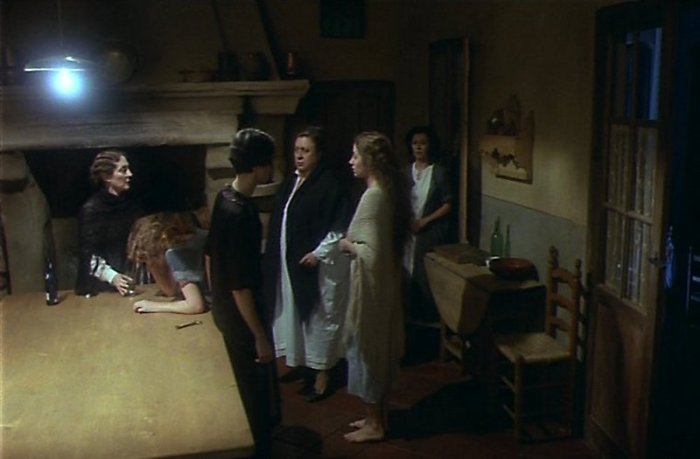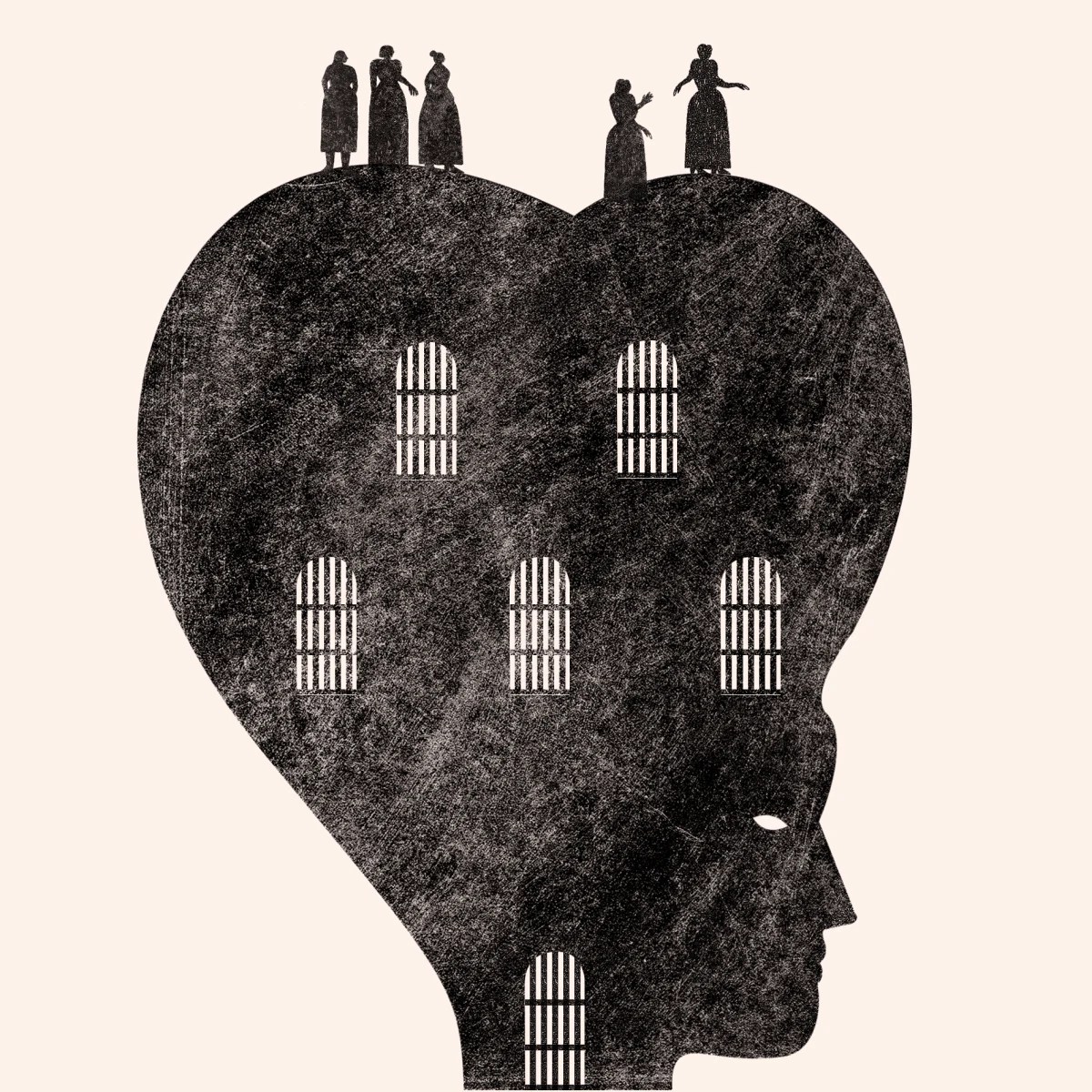Acto 3 la casa de bernarda alba – Act 3 of Federico García Lorca’s “The House of Bernarda Alba” unfolds within the oppressive confines of the Alba household, where tradition and honor reign supreme, and the weight of these societal norms suffocates the lives of the characters.
This act delves into the intricate relationships between Bernarda Alba, her five daughters, and the other inhabitants of the house, as they navigate the complexities of love, desire, and societal expectations.
Themes

The play explores several significant themes that are intricately intertwined and shape the lives of the characters:
The House as a Symbol of Oppression and Confinement
Bernarda Alba’s house serves as a powerful symbol of the oppressive and suffocating atmosphere that pervades the play. The physical structure of the house, with its thick walls, barred windows, and heavy doors, represents the strict social conventions and patriarchal authority that confine the women.
The house becomes a prison, isolating the women from the outside world and denying them any freedom or autonomy.
The Role of Honor and Tradition in Shaping the Characters’ Actions
The characters in the play are deeply influenced by the traditional values of honor and reputation. These values dictate their behavior and choices, often leading to tragic consequences. Bernarda Alba, for instance, is obsessed with preserving the family’s honor, even at the expense of her daughters’ happiness.
This obsession drives her to enforce strict rules and punishments, creating a stifling environment that ultimately contributes to the play’s tragic events.
The Themes of Sexuality and Repression in the Play
The play also delves into the complex themes of sexuality and repression. The women in the house are subjected to severe restrictions and denied any expression of their sexual desires. This repression leads to pent-up emotions and frustrations, which manifest in various ways throughout the play.
The characters’ suppressed desires and unfulfilled longings contribute to the play’s overall atmosphere of tension and conflict.
Characters: Acto 3 La Casa De Bernarda Alba

Bernarda Alba’s household is a microcosm of the oppressive and repressive social norms of rural Spain in the early 20th century. The play’s characters are vividly drawn, each with their own distinct motivations and struggles, and their interactions create a rich and complex tapestry of relationships.
Bernarda Alba
The tyrannical matriarch of the household, Bernarda Alba is a formidable figure who rules her daughters with an iron fist. Her authority is absolute, and she brooks no dissent or disobedience. Bernarda’s harsh and unyielding nature stems from her own experiences as a young woman, when she was forced into an unhappy marriage.
As a result, she is determined to protect her daughters from the same fate, even if it means keeping them isolated and oppressed.
Bernarda’s Daughters
- Angustias: The eldest daughter, Angustias is plain and unattractive, but she is also wealthy, which makes her a desirable bride. Bernarda is eager to marry her off to Pepe el Romano, a wealthy landowner, even though Angustias is not in love with him.
- Magdalena: The second daughter, Magdalena, is beautiful and passionate, but she is also rebellious and independent. She is secretly in love with Pepe el Romano, but she knows that her mother would never allow them to be together.
- Amelia: The third daughter, Amelia, is gentle and kind, but she is also weak-willed and submissive. She is content to live under her mother’s thumb, and she dreams of marrying a wealthy man who will take care of her.
- Martirio: The fourth daughter, Martirio, is deformed and bitter. She is jealous of her sisters’ beauty and happiness, and she takes pleasure in tormenting them. Martirio is a symbol of the destructive power of repression, and her character serves as a warning against the dangers of denying one’s true nature.
- Adela: The youngest daughter, Adela, is beautiful and spirited. She is full of life and passion, and she longs to escape from her mother’s suffocating embrace. Adela is the embodiment of youth and rebellion, and her character represents the hope for a better future.
Other Significant Figures
- Pepe el Romano: A wealthy landowner, Pepe el Romano is the object of desire for both Angustias and Magdalena. He is a handsome and charming man, but he is also arrogant and self-centered. Pepe el Romano represents the unattainable ideal of masculinity, and his presence in the play serves to highlight the oppressive nature of Bernarda’s household.
- La Poncia: The housekeeper, La Poncia is a loyal servant to Bernarda, but she is also a gossip and a troublemaker. She knows all the secrets of the household, and she uses them to her advantage. La Poncia represents the corrupting influence of gossip, and her character serves as a warning against the dangers of spreading rumors.
- Prudencia: A neighbor, Prudencia is a kind and compassionate woman who offers Bernarda’s daughters a glimpse of a different life. She is a symbol of hope and possibility, and her character represents the power of human connection.
Setting and Atmosphere

Federico Garcia Lorca’s “The House of Bernarda Alba” is set in a stifling and oppressive environment that mirrors the inner turmoil of its characters. The play’s physical setting, a secluded Andalusian village, is isolated from the outside world and dominated by Bernarda’s tyrannical rule.
In Acto 3 of La Casa de Bernarda Alba, the stifling atmosphere weighs heavily on the characters. The dust that settles on everything serves as a metaphor for the oppression and silence that suffocates them. Similarly, in the poem “Dusting” by Julia Alvarez dusting by julia alvarez poem , the act of dusting becomes a ritual of uncovering the memories and stories that have been hidden away.
Just as the characters in La Casa de Bernarda Alba struggle to break free from the constraints of their society, the speaker in “Dusting” seeks to uncover the truths that have been buried under layers of dust.
Symbolism and Imagery
Lorca uses vivid symbolism and imagery to create a sense of foreboding and tension throughout the play. The oppressive heat, the whitewashed walls of the house, and the barred windows all contribute to the stifling atmosphere. The play’s title itself is symbolic, as Bernarda’s house represents both a physical and emotional prison for her daughters.
Unique Structure
The play’s unique structure, consisting of three acts with a prologue and epilogue, heightens the sense of tension. The prologue introduces the characters and sets the stage for the tragic events to come. The three acts depict the growing tension within the household as the sisters rebel against Bernarda’s authority.
The epilogue provides a haunting resolution, revealing the tragic consequences of Bernarda’s oppressive rule.
Cultural and Historical Context

La Casa de Bernarda Albais a play that reflects the cultural and historical context of rural Spain in the early 20th century. It depicts a society where traditional values, customs, and social norms hold a strong influence on the lives of individuals, particularly women.
Influence of Spanish Culture and Traditions
The play is set in a small village in Andalusia, a region known for its rich cultural heritage and strong adherence to traditional values. The characters’ actions and motivations are shaped by the prevailing social norms and expectations of the time.
For instance, the play explores the theme of female oppression, a prevalent issue in Spanish society during that era.
Relevance to Contemporary Issues
Despite being set in a specific historical period, La Casa de Bernarda Albacontinues to resonate with contemporary audiences due to its exploration of universal themes such as power dynamics, gender inequality, and the struggle for personal freedom. The play’s portrayal of women’s limited agency and the consequences of societal repression remains relevant in today’s world.
Literary Techniques

La Casa de Bernarda Albaemploys a range of literary devices to enhance its dramatic impact and explore its themes.
Symbolism
The play is rich in symbolism, with objects and characters representing deeper meanings. The house itself represents Bernarda’s oppressive authority, while the white walls symbolize the stifling social conventions that suffocate the women.
Foreshadowing
García Lorca uses foreshadowing to create a sense of foreboding and suspense. Bernarda’s warning to her daughters that “evil winds are blowing” foreshadows the tragic events to come.
Irony
Irony is employed to highlight the disparity between the characters’ desires and their realities. Adela’s love for Pepe el Romano is ironically doomed from the start, given Bernarda’s strict control over her daughters.
Language and Dialogue, Acto 3 la casa de bernarda alba
García Lorca’s use of language is evocative and poetic, conveying the characters’ emotions and motivations. The lyrical language contrasts with the harsh realities of the play, creating a sense of both beauty and tragedy.
Structure and Pacing
The play’s structure is deliberate and precise, with a clear three-act structure that builds tension and suspense. The slow pacing of the first act intensifies in the second, leading to the tragic climax in the third.
Adaptations and Interpretations

The play “The House of Bernarda Alba” has been adapted numerous times for stage, film, and other media. These adaptations have ranged from faithful renditions to more radical reimaginings.One of the most notable stage adaptations was Federico Garcia Lorca’s own production in 1936. This production was highly acclaimed and helped to establish the play as a classic of Spanish theater.
Other notable stage adaptations include those by Luis Buñuel in 1987 and Mario Gas in 2009.The play has also been adapted for film several times. The first film adaptation was released in 1938 and starred Margarita Xirgu as Bernarda Alba.
Other notable film adaptations include those by Juan Antonio Bardem in 1971 and Pedro Almodóvar in 1994.Different interpretations of the play have emerged over time, reflecting the changing cultural and historical context. Some interpretations have focused on the play’s feminist themes, while others have explored its psychological and sociological dimensions.The
play’s adaptations and interpretations have been influenced by the cultural and historical context in which they were created. For example, the 1938 film adaptation was made during the Spanish Civil War and reflects the political and social tensions of that time.
The 1994 film adaptation, on the other hand, was made after the fall of the Franco dictatorship and reflects a more optimistic view of women’s roles in society.
FAQ
What is the significance of the house in Act 3?
The house in Act 3 symbolizes the oppressive and confining environment in which the characters live, representing the societal norms and expectations that restrict their freedom and desires.
How does honor and tradition shape the characters’ actions?
Honor and tradition play a dominant role in the characters’ lives, dictating their behavior and decisions. Bernarda Alba’s strict adherence to these societal norms leads to the repression of her daughters’ desires and ultimately contributes to the tragic events of the play.
What is the role of sexuality and repression in Act 3?
Sexuality and repression are central themes in Act 3, as the characters struggle with their desires and the societal expectations that forbid them from expressing them. This repression leads to tension, conflict, and ultimately tragedy.
